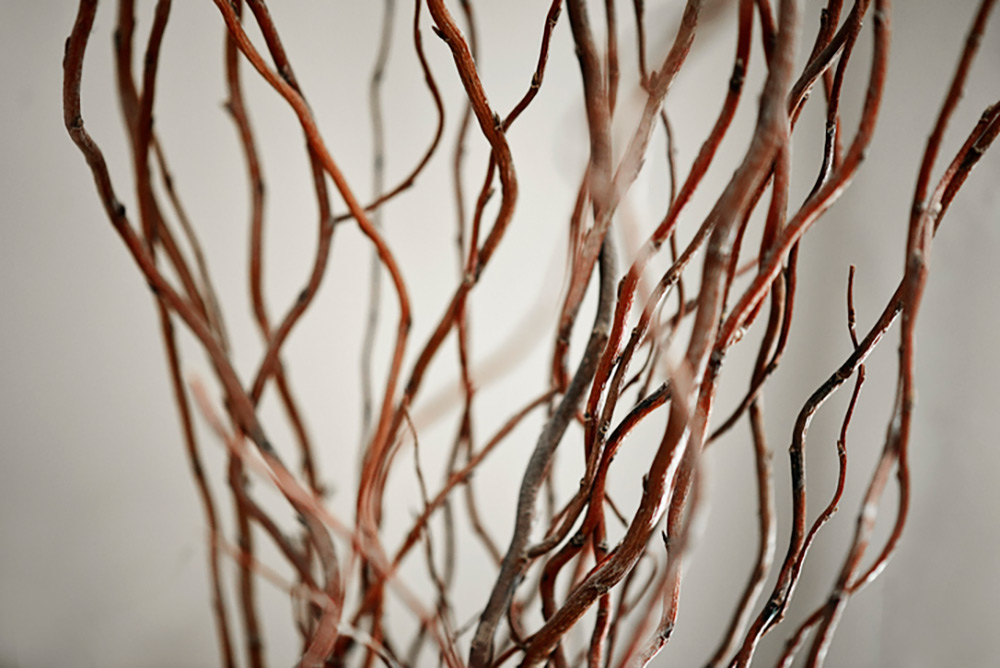By Stephanie Cavanaugh
TO ME, “CURLY” IS one of those words where the more you look at it the wronger it seems. Like it’s missing an “l” or needs two “r”s. “Willow” is fine the way it is—no matter how many times you look and look away and look back. But “curly”?
That was neither here nor there. But when one (me) chooses to write about curly willow branches and finds oneself stalled over the first word, one feels compelled to share.
Moving right along.
It is suddenly almost the middle of January and spring is right around the corner, though that corner being a few blocks farther down the street than you might wish. The other day I passed a front garden blessed with mounds of purple and yellow pansies and a red camellia just coming into blossom. It was a sight so cheerful I was nearly in tears.
I took a photo, but the startled joy of such color on a dreary winter day does not convey. The brown mulch and twiggy branches of this and that grab the eye and strangle the cheer.
So we bring brightness to the house—a bunch of flowers, clusters of greens, and my favorite of all, curly willow branches.
Time was, not too many years ago, that these sometimes 3-, 4-, 5-foot clippings were rarely seen. I first came across them at the Philadelphia Flower Show, in the retail/shop section, the same area that snagged me on plumeria sticks, a continuingly fraught relationship.
Curly willow is fairly common now. I used to order online, but now I pick them up at flower stands and have even found them at Trader Joe’s. Keep in mind, the window of opportunity is brief: They’re available for just a few weeks in midwinter. When you see them, snap them up immediately.
Pretty as is, the long red or green branches, coiled like loose springs, mean that you need only maybe six for a fantastic display.
You can let them dry—or plop them in water, which is a little like watching spring explode. In just a few days, tiny no-account leaves begin to sprout along the branches and you think, That’s it? But noooo. A few more days and WHAM! you’re looking at a fantastically frothy miniature willow tree, covered with leaves the deliciously fresh color of butter lettuce. Set the branches in a tall narrow vase on the dining table, break out your prettiest china and stemware, don your most colorful kimono, and it’s a garden party.
It might be nice if it were snowing.
While you’re enjoying the display, which should last at least a month, you’ll notice the branches are rooting in the water. When they form a healthy-looking mass, try planting them in soil, keeping them indoors until after the last frost date for your area.
It’s quite possible that those lovely branches will turn black, and the leaves shriveled, and the whole thing becomes a stinking mess, but maybe not. I did see a pot of curly willow outside a flower shop once: It was midsummer, and the branches were healthy and quite special to see. Want to try your hand? Tally ho!

